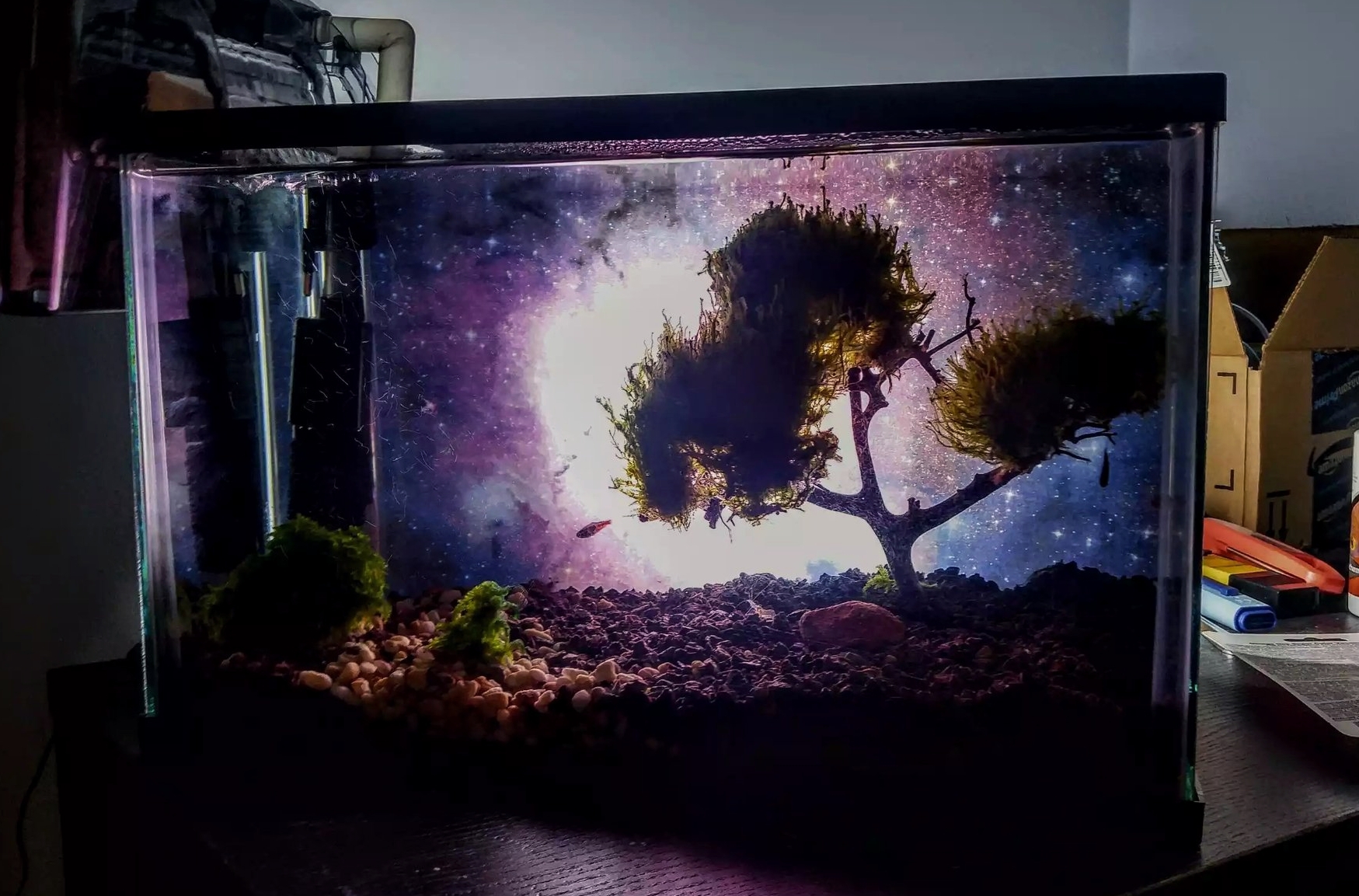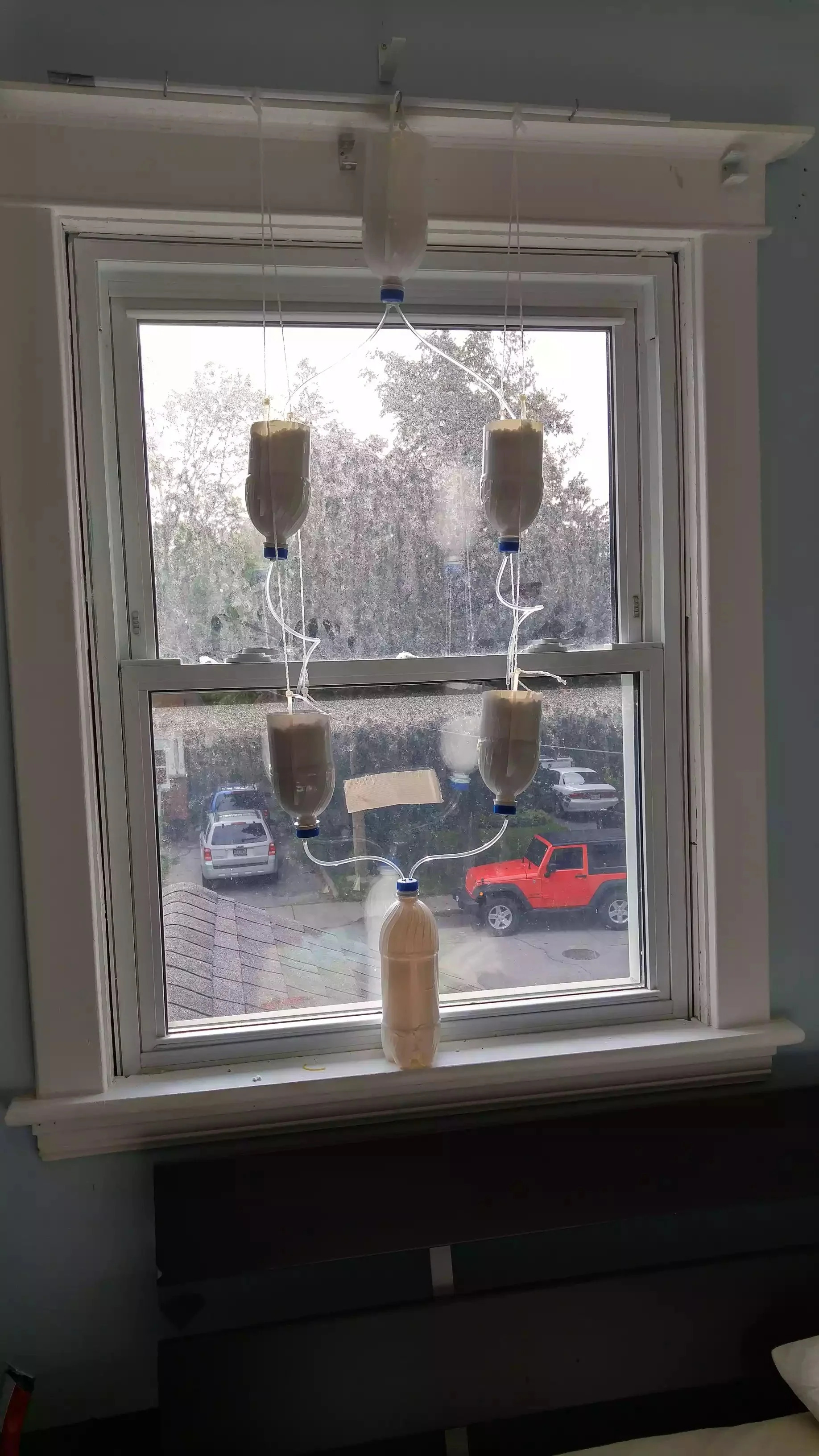Spirulina Algae Photobioreactor
I first heard about Arthospira platensis (Spirulina) when I saw a NASA mission featuring the growth of these microbes onboard the ISS. Why grow a cyanobacteria in space you might say? Well what these little guys can do is convert carbon dioxide into oxygen gas for one, and secondly they can also be ingested as a protein substitute. It contains 50-70% protein by dry weight for starters, high in iron, and is nearly 300 cals / 100 g to boot. So in terms of a great symbiotic friend for a closed biome (i.e. a sealed steel ball in orbit), Spirulina is a pretty darn perfect room mate.
Okay I was hooked after a few videos from Youtube and Reddit. How do I get a sample of this West African extremophile? Turns out Amazon, among a myraid of products, also carries this...
So I ordered this from AlgaeLab back when they had a Amazon store, it appears they don't have it anymore (July 2017). But they still do ship from their website. So take this in, I purchased a biological sample, shipping from California to Toronto, and it arrived in a little over a week with a bunch of Alkali salts without any major delay at customs. Are you kidding me? A biological sample and miscellaneous white powder can pass through the borders that easy, but I have had books delayed?!
Spirulina sample sent from AlgaeLab
I was so fascinated when I got the sample. It could photosynthesize before your eyes! I recorded a timelapse to see it in direct sunlight. Pretty dope right. The timelapse was over half an hour and condensed into about 5 seconds.
The kit from AlgaeLab came with alkali salts and nutrients with directions and ratios for dilution to the volume of water. I took the starter vial and added it into a large Voss glass water bottle.
Using aquarium air pumps, air was piped through plastic tubing. First into a water percolator to catch dust, then into the glass bottles. One tube was connected to an airstone which creates small air bubbles which will allow greater oxygen dissolution into the medium, and the second tube causes stirring from the bottom to the top of the water column by means of entraining liquid in a bubble tea straw similar to an airlift pump or geyser pump. The effect of the air pump is then two fold, greater carbon dioxide diffusion and stirring of the algae.
Spirulina reactor underneath the window with a DIY hydroponic garden above it.
Below is a short video of the pump system in action. The third tube at the top of the reactors is just for air outflow to avoid pressure building. It would frequently sputter out water and salt everywhere. I will touch on the hydroponic garden in a later blog post.
Around one week later we have hit the first exponential bloom phase! Here is another great thing about autotropic microbes, they are so freaking efficient. No photons wasted! Well, I guess thats not entirely true, many photons wasted, but they make trees look like slackers.
I think however my favourite thing about Spirulina is their defense mechanism towards getting too much light. Ever wonder why its called Spirlina? The cyanobacteria form a spiral-like shape when they get too much sunlight. Since sunlight is always going to come from one direction at a time (applied to one face), by rearranging into a spiral, only a fraction of total surface area is exposed. And what if the amount of light is too low and not ideal? They straighten out into a line to increase available surface area! How neat is that?
I bought a cheap $60 chinese microscope on Amazon (most of my projects start at amazon tbh) capable of 800x magnification and I took a cell phone picture through the cheap crappy plastic lenses. As you can see, spirals! Look at that!
It was at this point in the project where I realized I should never step foot in a casino. I had a nice batch of algae, now should I do double or nothing? Because of this whole exponential growth business, if my principal amount of algae is higher than before, I should get a ton more algae if I throw in a new batch of nutrients. Or maybe I should harvest these in a 5 micron cloth for consumption and grow a fraction of them again?
I decided to scale up the operation, and I was at this (below) amount of algae after another 10 days. I put an aquarium heater in the large sack of algae to maintain its temperature at ~32 C.
I also made this sack of plastic by buying a roll of vacuum pack freezer bag. Typically the vacuum pack machines use this uncut freezer bag material and they singe it closed to the correct size using a heated metal wire. I reproduced this and sealed the bags using a soldering iron. I should note all of these vials are hanging precariously above where I sleep... I sure have a lot of faith in a DIY sealed plastic bag eh??
I'm sure you are wondering, "But Mike, you said you shouldn't gamble at a casino, wasn't this a good gamble? Thats a great yield in the picture above?!" Well, you are indeed correct, its a great yield, but what happened next was quite traumatic for me (no the sack did not fall on my head while I slept). I left for a long weekend, and over that weekend we had one of the hottest heat waves in a while. Between the aquarium heater, tne additional heat and photon flux, the algae overheated and turned yellow. I tried to shade them and I took out the heater but they died.
I know, there is no happy ending, I'm sorry if you got emotionally invested through this journey. Yes they died, they are very fickle and although they are extremophiles that live in Eastern African salt lakes, they are not invincible.
I will add more to this blog post as I get along, a few other topics I want to hit (because i researched them during construction) are the following:
- Fresh vs dried spirulina









